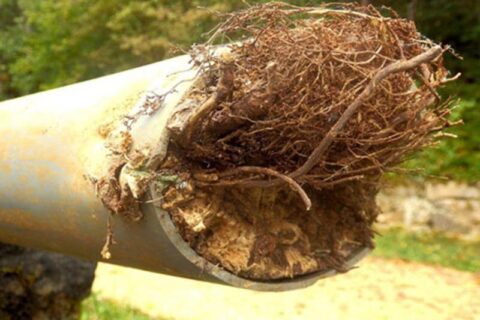Tree Roots in Your Sewer Line: What It Means and How to Fix It
Noticing slow drains, gurgling sounds, or sewage backups? You might have tree roots in your sewer line. As trees search for moisture, their roots can invade pipes, causing blockages, cracks, and costly damage.
Ignoring the issue can lead to pipe collapse, expensive repairs, and even sewage leaks in your yard. The good news? Modern plumbing technology, like sewer camera inspections, makes it easier to diagnose and remove tree roots before serious damage occurs. Let’s break down how roots get into pipes, what this means for your plumbing, and how to fix the problem.
How Do Tree Roots Get Into Sewer Pipes?
Tree roots naturally grow toward moisture, making sewer lines a prime target. If a pipe has even a tiny crack or loose joint, roots can sneak inside. Once inside, they expand, forming dense clumps that trap debris and block water flow. Over time, these roots can cause:
- Slow or clogged drains: Waste struggles to pass through root-filled pipes.
- Gurgling toilets and drains: Air pockets form as water fights through blockages.
- Sewage backups: Severe root growth can block pipes entirely, pushing wastewater back into your home.
- Foundation damage: In extreme cases, root growth can shift underground structures, affecting your home’s stability.
How to Confirm Tree Roots in Your Sewer Line
If you suspect tree roots in your sewer line, a sewer camera inspection is the best way to confirm the problem. A plumber inserts a small camera into your pipes, sending live video to a monitor. This allows them to see the exact location and extent of the root invasion.
How to Remove Tree Roots from Your Sewer Line
1. Mechanical Root Cutting
A plumber can use a cutting tool, like a root auger or hydro jet, to slice through the roots inside your pipe. However, this is only a temporary fix, roots will grow back unless you take additional steps.
2. Chemical Root Treatments
After cutting, applying a foaming root killer can slow regrowth. These treatments kill roots inside the pipe without harming the tree itself.
3. Pipe Lining or Replacement
If roots have severely damaged the pipe, a plumber may recommend trenchless pipe lining or full pipe replacement. Pipe lining installs a new, root-resistant liner inside the existing pipe, sealing cracks and preventing future root intrusion.
How to Prevent Tree Roots from Invading Pipes
1. Choose the Right Trees
If you’re planting trees near your sewer line, choose species with non-invasive root systems. Avoid willows, maples, and oaks, which aggressively seek out water sources.
2. Schedule Regular Sewer Inspections
A routine sewer camera inspection can catch root growth early. This allows you to address the problem before it leads to serious blockages or pipe damage.
3. Install a Root Barrier
A physical barrier between tree roots and sewer lines can redirect growth away from pipes. Plumbers can install these barriers using metal, plastic, or chemical treatments.
4. Keep Pipes in Good Condition
Tree roots target weak spots in aging or damaged pipes. Replacing old clay or cast-iron pipes with PVC can reduce the risk of root intrusion.
When to Call a Plumber
If you suspect tree roots in your sewer line, don’t wait for a full blockage or sewage backup. A professional plumber can assess the damage, recommend the best removal method, and help prevent future root problems.
Conclusion
Tree roots in sewer lines can cause serious plumbing headaches. But with early detection and the right solutions, you can clear blockages and protect your pipes from further damage. Whether it’s a simple root cutting, chemical treatment, or pipe replacement, acting fast can save you from costly repairs.
Need help? Schedule a sewer camera inspection to see what’s really going on in your pipes before the problem worsens.
Your Go-To Plumbing Services in north DFW
Specialty Plumbing is a family-owned and operated company proudly serving North DFW, including Celina, Frisco, McKinney, Plano, Allen, and Prosper, and surrounding areas. Our team is committed to providing exceptional customer service because we understand that plumbing issues can arise unexpectedly. Our mission is to resolve them swiftly and efficiently! Reach out to us today, for any plumbing service you need, and witness our commitment to excellence firsthand!
At Specialty Plumbing we love to empower our clients with general knowledge of their plumbing systems! If you have any questions on a topic, please feel free to reach out. We’re here to continue creating content that educates you further on your plumbing system.
